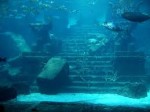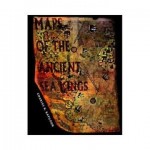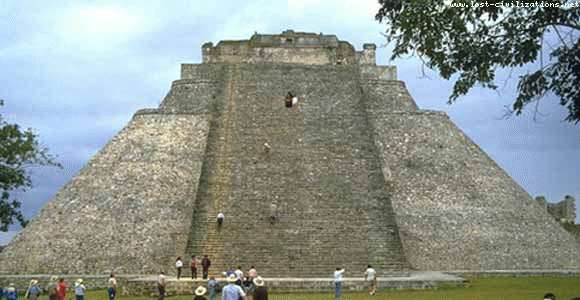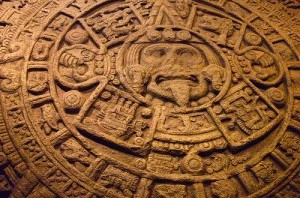For the last several years, global warming proponents have been predicting large increases in sea levels in the near future. The reason is directly linked to the melting of ice in the Polar Regions of the earth. The underlying reason for this is explained by increases mostly in carbon dioxide, which is a green house gas that has the effect of warming the atmosphere. This increase is explained by man-made technologies that burn hydrocarbons, producing carbon dioxide as they burn. Continue reading Al Gore Would Have Been Right About 20 Foot Rises in Sea Level a Few Thousand Years Ago
Category: Early World History
World History From Adam to Noah
Is there a logical timeline of world history that fits into a roughly 6000 year span rather than millions and millions of years as taught in most history books? We think so. . .
In the beginning, the world, all living things, and humans were purposefully designed and created by God, along with everything needed to sustain life and the universe. This was approximately 4000 years before the time of Jesus’ earthy ministry.
The first man and woman, Adam and Eve, appeared on earth fully formed and mature. They did not gradually evolve from ape-like animals. Nor did they need millions of years to learn a language or how to make and use tools. All of this was built-in knowledge, somewhat like a computer with built-in programs. Continue reading World History From Adam to Noah
Remains of Cities Built on the Continental Shelf
Remains of Cities Built on the Continental Shelf

Some of the world’s greatest mysteries are remains of cities, temples, and other man made structures all over the world on the earth’s continental shelves below the surface of the oceans. A few are found in sites only tens of feet below the ocean surface. Others are found in places a few hundred feet deep.
The remains have been subjected to ocean currents, as well as chemical and physical erosion for thousands of years. Part of the mystery is why there are any remains of man made structures at all. Continue reading Remains of Cities Built on the Continental Shelf
The True Source of Ancient World Maps

The True Source of Ancient World Maps
Maps of places all over the world began appearing as early as the 1300s. The maps included portions of North and South America, Central America, Antarctica, and Asia. Historians familiar with the maps have suggested luck, an unsolved mystery, and even space aliens as the sources for them. However, there is a logical explanation that begins with an account of history recorded in the Bible. There is every indication that a worldwide flood actually occurred about 4000 years ago, destroying the entire population of the earth except for Noah and his family.
What Do Ancient World Maps Tell Us?
What Do Ancient World Maps Tell Us?

Published By: Souvenir Press
London
“In 1492, Columbus sailed the ocean blue.” This was a little jingle my teacher taught the class when we were studying American history to help us remember an important date. We were told that this was the year when seaworthy ships first began to cross the Atlantic Ocean and explore new worlds. It was assumed that accurate surveying and mapping methods were not used by earlier civilizations. Another assumption found in most history texts is that the earliest humans were ape-like cavemen who gradually, over hundreds of thousands of years, learned to talk, develop tools, build houses and ships, and become civilized.
In 1492, some of the known regions of Europe and Northern Africa were not well surveyed, and maps of these areas were often inaccurate. When accurate maps of yet undiscovered parts of the world began to show up, these assumptions were challenged. So, how did Turkish admirals and other come to possess maps of places all over the world that were drawn during the 1300s AD through the 1500s AD and later? Continue reading What Do Ancient World Maps Tell Us?
The Pyramid Belt

In the small community where I grew up there are still a couple of log cabins that owners have preserved. But most of the 1800 houses and buildings are no longer standing. There are even fewer buildings from the 1700s, 1600s, or 1500s within hundreds of miles of my hometown.
However, there are still several man-made structures that were built around 1000 A.D. within easy driving distance of where I grew up. These are well-built earthen mounds found in Alabama, Mississippi, Tennessee and other Southeastern states. There are literally thousands of mounds in or around the Mississippi basin and its tributaries.
Mounds near the ocean were typically made from shells, animal bones, and other items. Not all of the mounds are well-preserved, but of the ones that have been studied by professional archeologists, many skillfully made artifacts have been recovered.
Not a lot is known about the mound builders, but they seem to have made up flourishing communities from around A.D. 800-1500. About 500 years ago, they dissipated or died off, leaving few clues as to what happened to them. The original people who lived in these cultures were apparently very intelligent and used advanced technologies in building mounds, sun calendars, and other items. Continue reading The Pyramid Belt
Crossing the Earth’s Oceans: 2000 B.C.

Would it surprise you to know that three women, Tori Murden in 1999, Julie Wafaei in 2006, and Katie Spotz in 2010, rowed solo across the Atlantic? In fact, the number of recorded times individuals or small teams have rowed across the Atlantic and even the Pacific Ocean is now in double digits. The first recorded account of a team of two people to row across the Atlantic was in 1896, completed without the help of modern electronics or tools.
The jingle “In 1492 Columbus sailed the ocean blue” is so ingrained in our thinking that it’s hard to imagine that Columbus wasn’t the leader of the first team ever to row or sail across the Atlantic. But, some compelling evidence indicates that many people traveled across the oceans and mapped the places they visited well before the time of Columbus.
The Regression of Early Civilizations
Some of the people who lived 3000 to 4000 years ago built pyramids and other megalithic buildings. They traveled in ships to various places around the world in search of minerals and natural resources. They made calendars that showed the correct length of a solar year. They obtained minerals such as iron and copper from smelting furnaces. They measured the earth, surveyed it, and made accurate maps of the earth. Continue reading The Regression of Early Civilizations
Cast Your Bread Upon the Waters
“Cast your bread upon the waters, for after many days you will find it again. Give portions to seven, yes to eight, for you do not know what disaster may come upon the land.”
When King Solomon wrote these words, he wasn’t speaking in riddles. His advice was a comparison about making wise investments and getting a return on those investments. King Solomon of Israel and King Hiram of Tyre had formed an alliance and had also developed a friendship. The Israelites had little knowledge of navigating ship on the open ocean, but the Phoenician sailors of Tyre had a long history of ship building and traveling long distances by ships in search of minerals and other natural resources.
Demystifying the Mayan Calendar
It’s time to demystify the Mayan calendar, which ends on December 21, 2012. It is causing quite a stir among many people who are wondering if the Mayans have really identified this date as the time for worldwide catastrophic events.
My husband and I were traveling through a small town recently and stopped at a local café to eat. A young man seated near us was passionately trying to persuade his friends to stock up on food, water, batteries, and other supplies, because December 21, 2012, was going to start a period of worldwide catastrophes.
